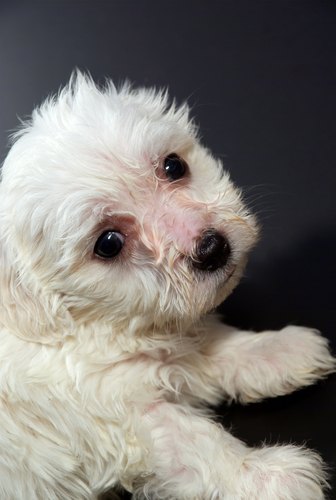Malti-Pug


About Malti-Pug
This cute little dog with the big personality is the Malti-Pug. He combines the playful nature of the Maltese with the alert, protective tendencies of the Pug to produce a spunky, fun-loving pooch that is a great addition to any family.
The big personality of the Malti-Pug is a blend of the playful Maltese and the super alert Pug.
The Malti-Pug is considered a Designer Dog and likely originated in the 1980’s when mixing pure-bred pooches in order to produce smaller, hypoallergenic or gentler versions of popular dog breeds first became popular.
The Malti-Pug is not a purebred and therefore is not registered with the American Kennel Club (AKC). His parent breeds are both long-time members; the Maltese joined the “toy” group in 1888 while the Pug became a member of the same group in 1885.
The Malti-Pug is a small-breed dog that is moderately active. His food should be a high quality kibble that is specifically designed for his size, age and activity level (or non-activity level) meaning keep it high in protein and low on fillers that may cause him to overeat to feel hungry and become obese later in life. Feeding should be controlled and spread throughout the day to avoid binge-eating – ideally 2 to 3 smaller meals.
The Malti-Pug is an intelligent pooch who picks up quickly on commands.
The Malti-Pug is an intelligent pooch who picks up quickly on commands. Although patience will be required to work through a potential stubborn streak, taking a firm, consistent approach will ultimately net you the results you are seeking. As with any breed, they respond best to a rewards based approach to training which means lots of praise and treats of your choice, when earned.
Your Malti-Pug will likely tip the scale at 10 to 20 pounds.
The Malti-Pug is a friendly, devoted little family dog who gets along well with children and other animals alike. They’re outgoing nature and love of all things family makes them a fun companion dog while a cautious side to strangers makes them a good watchdog candidate. A wilful, independent streak can make them a bit of a handful for an inexperienced pet owner.
Although designer dogs typically avoid many of the health issues that can plague their pure-bred parents, it’s always wise to know what can be inherited. With the Malti-Pug you may experience patella luxation and other joint issues common with the Maltese while the Pug side may present as eye and respiratory issue if your pup inherits the shorter muzzle and protruding eyes. This dog is prone to dental issues so regular check-ups are required.
The Malti-Pug has a life expectancy of 12-15 years.
In spite of their energetic personality, Malti-Pugs don’t require an excess of exercise. Short daily walks combined with interactive playtime should be sufficient to keep him fit and mentally stimulated.
The Malti-Pug loves his family but is cautious with strangers, making him a good watchdog.
Also known as the Maltipug, the Malti-Pug is recognized by the the Dog Registry of America, Inc. (DRA) and the American Canine Hybrid Club (ACHC).
Your Malti-Pug brings a short-haired breed together with a long-haired breed to produce a dog that can be fairly heavy shedder. If your pup leans towards the longer hair of the Maltese, he will require less brushing but regular trips to the groomer. If he picks up the shorter coat of the Pug, more frequent brushing will be needed to keep shedding in check. Because he is prone to dental issues, teeth brushing should become part of his regular grooming routine.
Malti-Pug puppies are sturdy little pooches who are highly intelligent and can begin their socialization training almost immediately. Because of their tendency to develop a bit of an attitude, this is an important step in the training process. A tendency to joint issues later in life means you should be careful with handling and not overdo exercise sessions that may unintentionally injure tiny joints.
Photo credit: Andi Berger/Shutterstock.com; sompong.j5d/Shutterstock.com; Dusan Po/Shutterstock.com

Sharing space with three seriously judgy Schnoodles and a feline who prefers to be left alone. #LivingMyBestLife
More by Mary Simpson

























